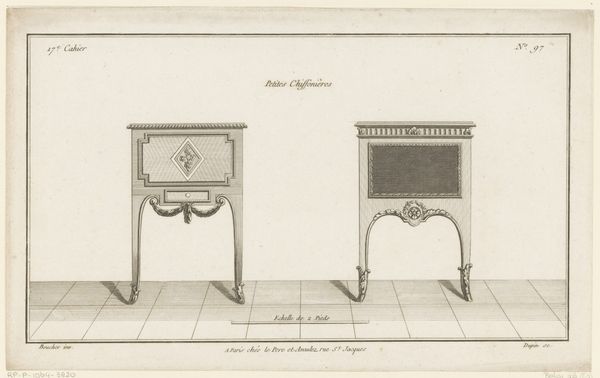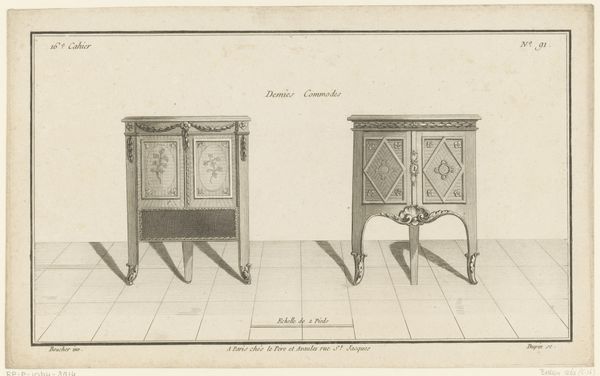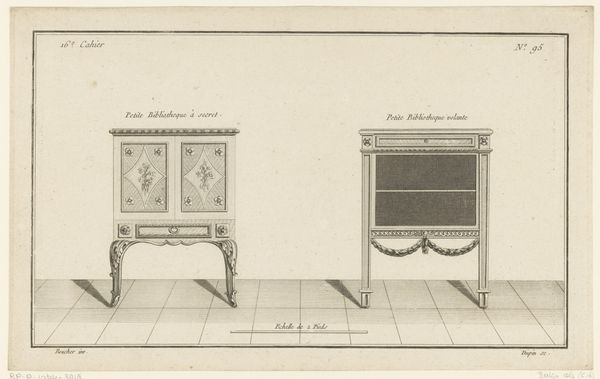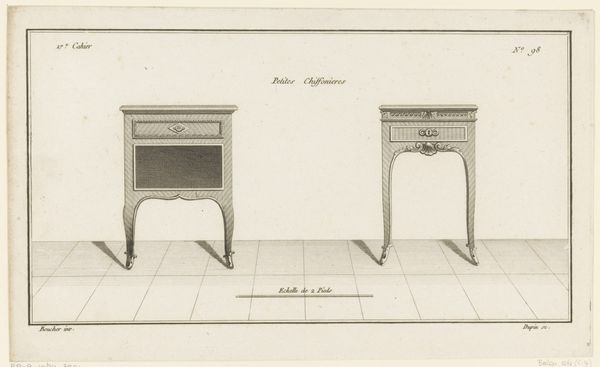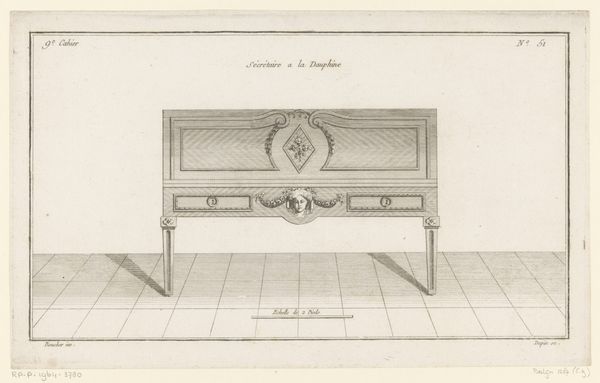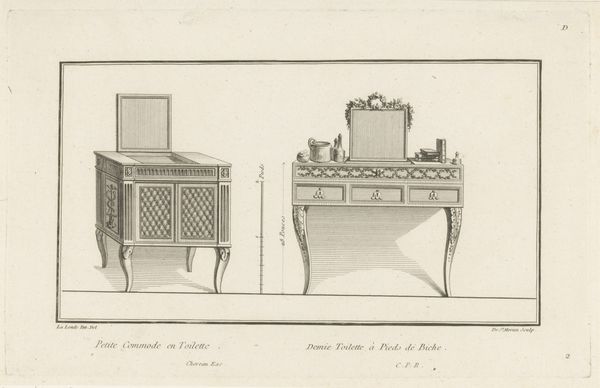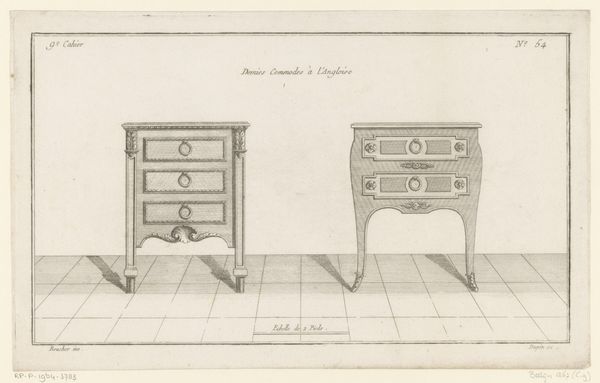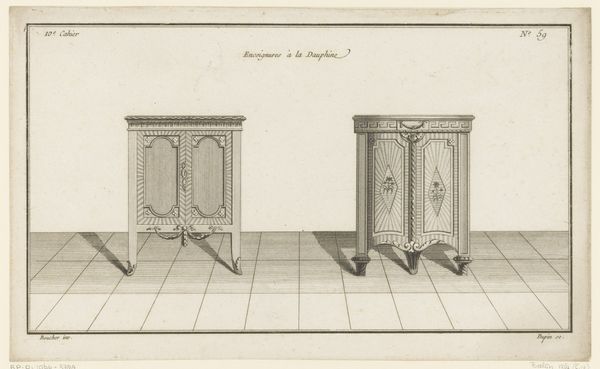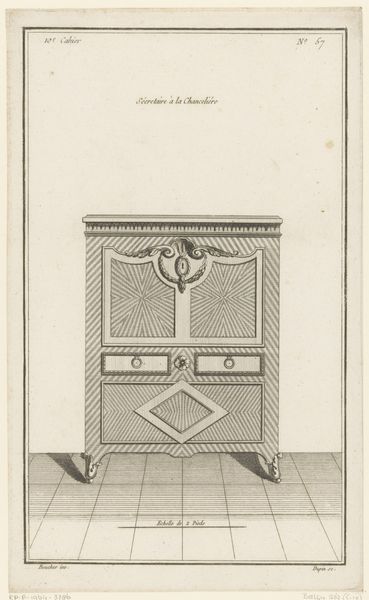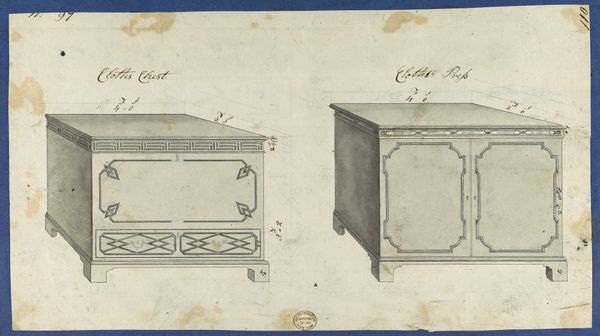
#
aged paper
#
toned paper
#
homemade paper
#
ink paper printed
#
parchment
#
light coloured
#
old engraving style
#
retro 'vintage design
#
personal sketchbook
#
nude colour palette
Dimensions: height 201 mm, width 327 mm
Copyright: Rijks Museum: Open Domain
Editor: Here we have "Twee kluizen," or "Two Safes," by Nicolas Dupin, dating from 1772 to 1779. It’s an ink print on paper, and what immediately strikes me is the meticulous detail and the focus on the objects themselves, these miniature chests almost floating in the frame. How do you interpret this work? Curator: As a materialist, I’m immediately drawn to the processes involved in its creation. It’s an ink print – think about the labor involved in the design and the reproduction of this image. These aren’t presented as grand works of art, but as designs, for what exactly? Who was the intended audience? Editor: Perhaps furniture makers? The title, "Two Safes," does imply a practical purpose. Do you think it's significant that they're safes, objects associated with wealth and security? Curator: Absolutely. Consider the social context. The late 18th century was a time of burgeoning merchant class, increased trade, and the accumulation of personal wealth. These safes aren't merely functional objects; they represent status, control over resources, and hint at social hierarchies of the time. The choice of materials, ink on paper, makes them accessible to a broader audience compared to actual safes made of precious metals, no? Editor: That's a great point. The print democratizes the design. So it is an interesting parallel – the inaccessibility of the real item versus the accessibility of the design and ideas on paper. I never considered the social and economic implications. Curator: Precisely! And that's what a materialist perspective offers: an understanding of how objects and their representations are inextricably linked to the socio-economic structures of their time. It moves beyond just aesthetics and asks, "What does this object *do*?" Editor: I've definitely gained a new perspective on how art can reflect the material conditions of its creation. Thanks for helping me appreciate the process beyond just the final design.
Comments
No comments
Be the first to comment and join the conversation on the ultimate creative platform.

